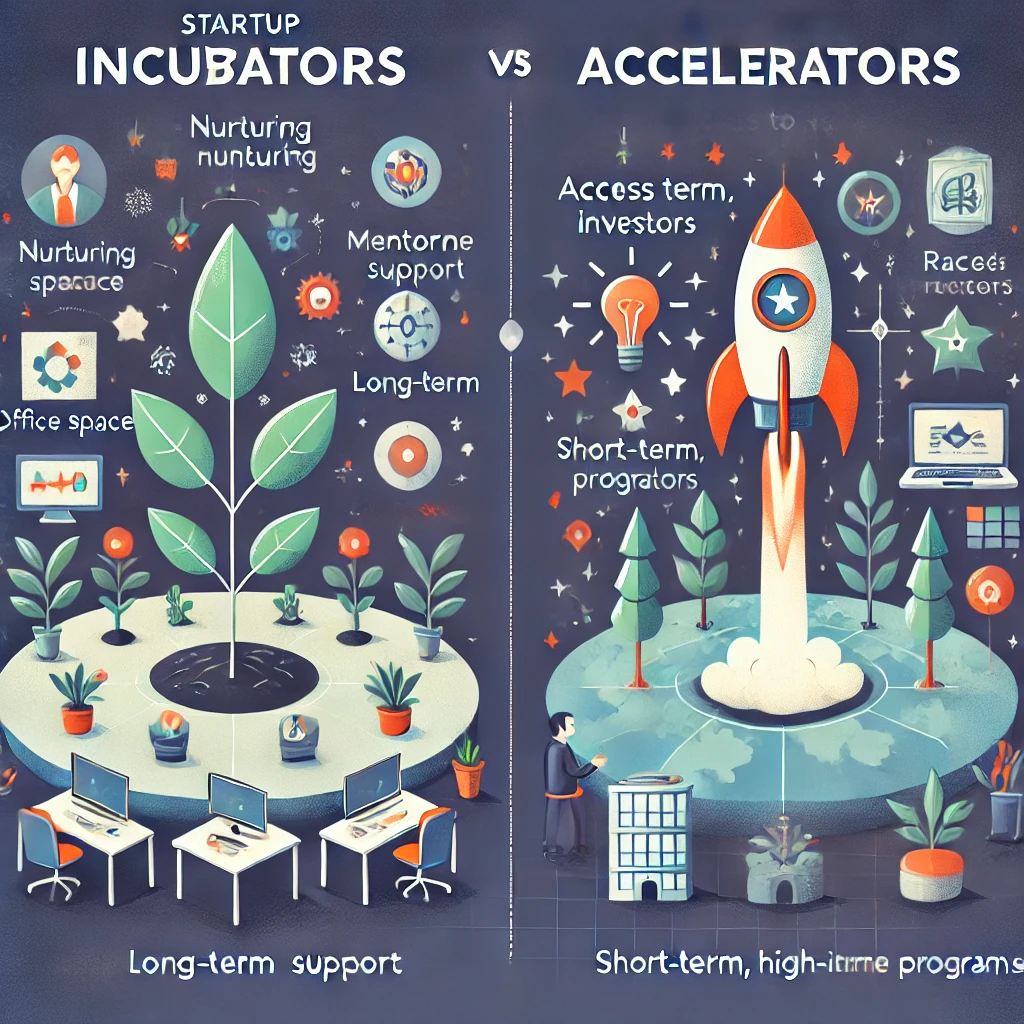Are India’s Startup Incubators Falling Behind? Reimagining the next decade of Growth.

A Curious Case of Indian Startup Ecosystem: Past, Present and Future.
India’s startup ecosystem has been growing rapidly from around 20 incubators until 2000, to over 1,100 active incubators today driving innovation across various sectors. In India, incubators and accelerators are set up with central and state government funding, but recent years have witnessed an influx of private investors interested in operating an incubator and accelerator.
However, despite this progress, only 8.2% of startups in India undergo incubation, and just 10% of these incubators support 98% of the startups. This indicates a critical gap in how incubators are distributed and their effectiveness. This raises a significant question: why aren’t more startups benefiting from incubation, and what needs to change?
- Incubator Density is Too Low: India currently has 0.8 incubators per million people, which lags behind countries like the US, UK, and China that boast 8 to 10 incubators per million. This gap leaves many startups, especially those outside Tier I cities, without access to crucial support. South India houses 45% of all incubators, leaving other regions underserved. The need for more incubators, particularly in Tier II and Tier III cities, is evident.
- Sectoral Diversity is Lacking: Most incubators are focused on tech startups, particularly in IT services and software. However, India’s growth potential lies in a wider range of industries such as agritech, healthtech, medtech, cleantech, and deeptech. These sectors require specific support systems—specialized infrastructure, sector-specific mentorship, and innovative funding models—that current incubators aren’t fully equipped to provide.
- Concentration in Tech and Tier-1 Cities: As per the industry estimates, the startups have spread across over 670+ districts of the total 806 in India. Major cities like Bengaluru, Hyderabad, Chennai, and Pune host a large pool of tech graduates and have become talent hubs, making them the favourite destinations for VCs and tech giants. However, data reveals that around 50% of these companies now operate in tier 2 and tier 3 cities, demonstrating the viability of their operations in these areas. Developments in infrastructure, availability of talent, and lower cost of living are making these destinations attractive to the new age entrepreneurs.
- Global Market Access is Limited: While Indian startups are scaling within the domestic market, many struggle to tap into global opportunities. Incubators need to foster international partnerships and offer startups a pathway to global expansion, whether through mentorship from international experts or connections to global investors.
- Academia-Industry Collaboration is Weak: Indian universities are home to cutting-edge research, but the connection between academic institutions and incubators is weak. Closer collaboration can enable startups to leverage university research, access innovation, and work with top talent—accelerating their development and scaling.
- Tailored and Resilient Mentorship: Incubators often offer general mentorship, but startups, particularly in emerging sectors, require highly specialized guidance. Whether it’s deeptech, cleantech, or biotech, incubators need to bring in mentors with direct experience and sector-specific knowledge to help startups navigate their unique challenges. Additionally, incubators must help startups build resilient business models that can withstand market volatility and economic downturns, especially in the wake of global disruptions like COVID-19.
What is the Value Venture Studios Can Create for India?

Venture studios or Startup studios represent a new model for creating startups. Unlike traditional incubators or accelerators that provide limited guidance, venture studios actively build startups from scratch. This approach is proving valuable in India, where many startups face challenges such as lack of resources and market understanding. Here’s how venture studios bring value:
- Efficient Startup Creation: Venture studios work differently by generating ideas internally, conducting market research, and then building businesses around those ideas. This model is especially useful in India, where there are countless opportunities in sectors like healthcare, clean energy, and agriculture. The studio model offers a repeatable process for identifying problems, prototyping solutions, reducing the risks involved in startup creation, and develop scalable businesses faster.
- Lower Risk for Founders, Higher Success Rate: Traditional startups face a high rate of failure due to resource limitations and lack of expertise. Venture studios share critical resources such as legal, technical, and marketing expertise, allowing entrepreneurs to focus on execution. This significantly reduces the risks for founders and boosts their chances of success. Global data shows that startups emerging from venture studios are 3-4 times more likely to succeed compared to traditional startup setups.
- Capital and Talent Efficiency Venture studios are highly efficient in their use of capital and talent. By validating ideas early, they avoid wasting resources on unviable concepts. Studios can also attract top talent by offering the opportunity to work on multiple high-potential ventures simultaneously. This access to talent ensures startups have skilled professionals from the outset.
A Few examples of Venture Studios (there are many more)-
Idealab: One of the pioneers in the venture studio model, founded by Bill Gross, has created over 150 companies including Picasa and NetZero
Rocket Internet: A Berlin-based venture studio that has rapidly replicated successful business models across emerging markets, including companies like Lazada and Zalando.
T9L: One of India’s leading venture studios that has nurtured numerous successful startups, providing a comprehensive platform for entrepreneurs to scale.
Antler India: focuses on building startups through shared resources and mentorship, ensuring that the risk for first-time entrepreneurs is significantly reduced.
RisingIndia ThinkTank: A new venture studio focusing on Tier II and Tier III cities in India, providing opportunities for local entrepreneurs to create scalable businesses.

- Inclusive Innovation for India One of the key benefits venture studios bring to India is the ability to decentralize innovation. By creating hubs in Tier II and Tier III cities, they foster local entrepreneurship, promote regional development, and create jobs outside traditional tech hubs like Bengaluru and Hyderabad.
According to the Harvard Business Review, “In the last two decades, three types of organizations — incubators, accelerators, and venture studios — have emerged to reduce the risk of early-stage startup failure by helping teams find product/market fit and raise initial capital. Most are founded and run by experienced entrepreneurs that have previously built companies and who understand the difference between theory and practice.”
How to Plan the Next Decade for the Indian Startup Ecosystem?
India’s startup ecosystem is at a crucial juncture. To maximize its potential over the next decade, a comprehensive strategy is required to foster innovation, inclusivity, and global competitiveness. Here’s an innovative framework:

The “RISE Framework”: Regionalize, Innovate, Scale, Empower
- R – Regionalize Startup Support The Indian startup ecosystem must go beyond Tier-1 cities. Expanding incubators and venture studios to Tier-2 and Tier-3 cities will democratize access to resources, create jobs, and foster local innovation. Creating sector-specific clusters in key industries like agritech in Punjab or fintech in Mumbai will allow regions to develop tailored solutions to local challenges. Example: RisingIndia ThinkTank focuses on startups outside major cities, supporting innovation where it is most needed.
- I – Innovate with Sector-Specific Hubs India should create sector-specific hubs that drive innovation in critical fields such as clean energy, deeptech, and healthtech. Collaboration between research institutions, corporates, and startups in these hubs can accelerate breakthroughs. Example: Hyderabad can continue to serve as a life sciences hub, fostering startups in healthcare and biotechnology, leveraging its existing research base and talent pool.
- S – Scale with Access to Capital Ensuring that startups have access to funding across all stages—from seed to growth—is essential. Encouraging corporate venture capital and opening up institutional capital from pension funds and insurance companies will provide a continuous flow of capital. Additionally, simplifying regulatory processes will help startups secure funds more efficiently. Example: Venture studio Plug & Play offers access to a global network of investors, facilitating the scaling of startups across various sectors.
- E – Empower Talent and Entrepreneurs A robust ecosystem needs skilled entrepreneurs. India should invest in STEM education, vocational training, and leadership programs to equip young professionals with the skills required by startups. Corporate-startup collaborations can help bridge the talent gap by providing mentorship and training to budding entrepreneurs. Example: Entrepreneur First connects aspiring founders with each other and offers them the mentorship needed to grow successful businesses.

Conclusion: The Way Forward to Rejig Indian Startup Ecosystem…
India's startup ecosystem is at a pivotal moment, with the potential to become a global innovation powerhouse. While addressing large-scale challenges relevant to its vast population, India can attract mentors, market opportunities, and access to money from around the world, solidifying its position as a leading startup hub.
By rebooting incubators to address regional and sectoral gaps, embracing the venture studio model to accelerate innovation and reduce risk. By adopting the RISE Framework, India can build a more inclusive, regionally diverse, and innovation-driven ecosystem that meets both local and global challenges. With strategic investments in talent, infrastructure, and sustainable innovation, the next decade can be transformative for India’s economy and entrepreneurial landscape.
Sources:
- NSRCEL and CREST Report: “India Incubator Kaleidoscope 2024”
- NASSCOM Startup Report 2023
- Global Innovation Index 2023
- Analyzing the Policy Landscape of Indian Startup Ecosystem by WITP-Wadhwani Foundation
India’s next wave of innovation will be built on an ecosystem that is agile, inclusive, and globally competitive, offering solutions to not only India’s challenges but also global problems. By combining data-driven insights with sector-specific initiatives and a focus on decentralization, the Indian startup ecosystem can unlock its full potential in the coming decade.






Responses